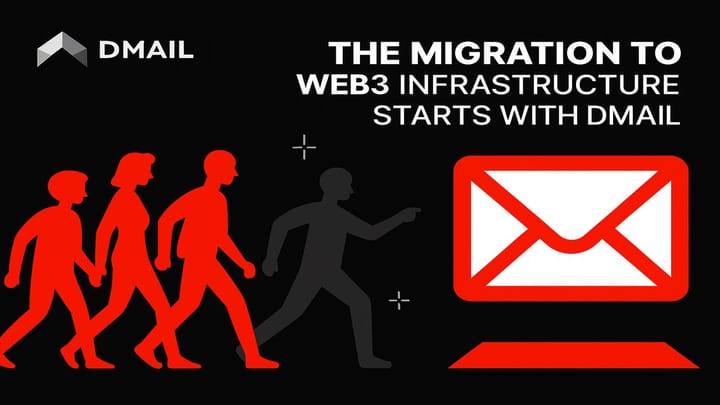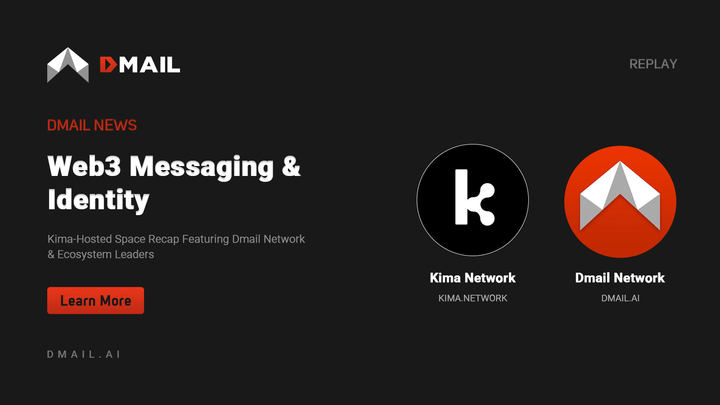Why Communication Is the Final Layer Web3 Needs
The next phase of Web3 is simple: give people a way to communicate that honors the values we claim to hold—decentralization, privacy, interoperability, and ownership.

By Daniel James, COO of Dmail Network
When we talk about the building blocks of Web3, a few essentials always come up: wallets, smart contracts, decentralized storage. These are the foundation—the raw mechanics that make blockchain ecosystems function. But something’s missing in almost every conversation.
That missing piece? Communication.
Not chat apps. Not Discord servers. I’m talking about true, native, decentralized messaging infrastructure—a way for protocols, users, and DAOs to communicate with each other directly, on-chain, and in a way that respects privacy, autonomy, and ownership.
Communication Shouldn’t Be a Web2 Add-On
Today, most Web3 projects still rely on Web2 tools to talk to their communities: Mailchimp for emails, Twitter for announcements, Telegram for support, Google Forms for onboarding. It’s ironic—we’ve decentralized the ledger, the currency, the identity… but left communication to centralized platforms.
This creates real risks:
- Security: Fake accounts and phishing scams run rampant.
- Censorship: What happens when your Telegram group is banned or your Substack account is frozen?
- Data leaks: User metadata is stored off-chain, unprotected, and often monetized.
Web3 deserves better. And it’s not just about ideology—it’s about functionality. Without a communication layer, every other layer struggles to scale.
Wallets Let You Hold; Messaging Lets You Coordinate
A wallet lets you sign in. A smart contract lets you transact. But what about trust? Engagement? Retention?
A DAO can’t function without the ability to notify members of a proposal. A staking protocol can’t inform users about slashing risks. A DePIN project can’t coordinate a global network of node operators without reliable, targeted messaging.
That’s where Dmail comes in.
We’re not here to build a better inbox. We’re here to build the communication layer Web3 never had—and desperately needs.

What Native Messaging Actually Looks Like
We’ve learned a lot from working with over 50 million users across 38 chains. Here’s what native messaging needs to deliver:
- Wallet-based identities: No signups, no emails. Just connect your wallet and go.
- Encrypted by default: Every message is private. Not opt-in—standard.
- Token-gated delivery: Want to send updates only to stakers or NFT holders? No problem.
- SubHub campaigns: Think Mailchimp, but decentralized. Airdrops, governance votes, node updates—all segmented and automated with AI.
This isn’t theory. This is what’s already happening on Dmail. And it’s transforming how protocols connect with their communities.
Infrastructure Is About Coordination, Not Just Code
Infrastructure is often viewed through a technical lens: bandwidth, latency, uptime. But real infrastructure—social infrastructure—is about connection. It's about enabling people to act, to respond, to build together. And you can’t do that without talking to each other.
Without messaging, Web3 is fragmented.
With messaging, it becomes a living, breathing network.
The Future We’re Building
I believe the most important thing we can do for the next phase of Web3 is simple: give people a way to communicate that honors the values we claim to hold—decentralization, privacy, interoperability, and ownership.
Because when we get messaging right, everything else becomes easier:
- Protocols retain contributors.
- Projects onboard users faster.
- DAOs run smoother.
- Ecosystems grow organically, not algorithmically.
The final layer isn’t an afterthought—it’s the connective tissue.
And Dmail is here to build it.

Connect with Dmail: Website | Twitter | Discord | Github | Telegram





Comments ()